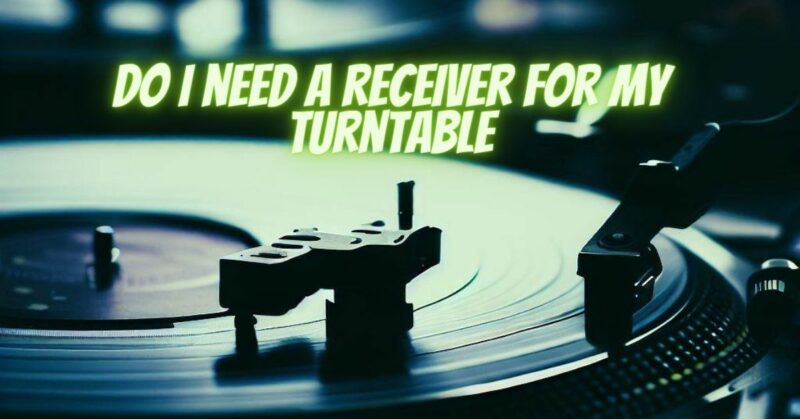In the world of audio setups, the concept of using a turntable without a receiver often raises questions about compatibility and functionality. A receiver plays a crucial role in amplifying and routing audio signals, but the landscape of audio equipment has evolved, giving rise to alternative setups. In this article, we’ll delve into the dynamics of using a turntable without a receiver and explore the considerations involved.
Understanding the Basics:
A traditional audio setup typically includes components like a turntable, amplifier or receiver, and speakers. The turntable produces a low-level analog signal from the vinyl grooves, which needs to be amplified to audible levels before being sent to speakers.
The Role of the Receiver:
A receiver combines an amplifier with additional functionalities like radio tuners, inputs for various audio sources, and sometimes digital processing capabilities. It acts as the central hub for routing and amplifying audio signals from different sources, including turntables.
Using a Turntable without a Receiver:
It’s possible to use a turntable without a receiver by utilizing alternative solutions:
- Active Speakers: Active or powered speakers have built-in amplifiers, allowing you to directly connect your turntable to them. This eliminates the need for a separate receiver or amplifier.
- Phono Preamp: If your turntable requires a phono preamp for proper signal amplification, you can use an external phono preamp before connecting to powered speakers or any audio device with line-level inputs.
- Integrated Amplifiers: Integrated amplifiers combine amplification and source switching functionalities in one unit. They can serve as alternatives to traditional receivers while providing enough power for your speakers.
Considerations:
- Audio Quality: Some dedicated receivers or integrated amplifiers might offer higher-quality amplification than built-in amplifiers in powered speakers.
- Room for Expansion: If you plan to expand your audio setup with additional components, a receiver or integrated amplifier might offer more flexibility.
- Connectivity Options: Receivers often offer a range of inputs and outputs for multiple devices, making them suitable for complex audio setups.
Advantages of Using a Receiver:
- Versatility: Receivers offer the flexibility to connect multiple audio sources, including turntables, CD players, streaming devices, and more.
- Audio Processing: Some receivers include digital processing features, such as surround sound modes or room calibration, which can enhance your audio experience.
- Power Handling: If you have power-hungry speakers or plan to drive multiple sets of speakers, a receiver with higher wattage might be better suited.
While using a turntable without a receiver is feasible thanks to alternatives like active speakers and integrated amplifiers, the choice ultimately depends on your needs and preferences. If you value simplicity, a turntable paired with powered speakers can provide a straightforward setup. However, if you anticipate expanding your audio setup or require advanced features, a receiver or integrated amplifier might be more suitable. As technology continues to evolve, it’s essential to explore the options that align with your audio goals and deliver the sound quality you desire.


